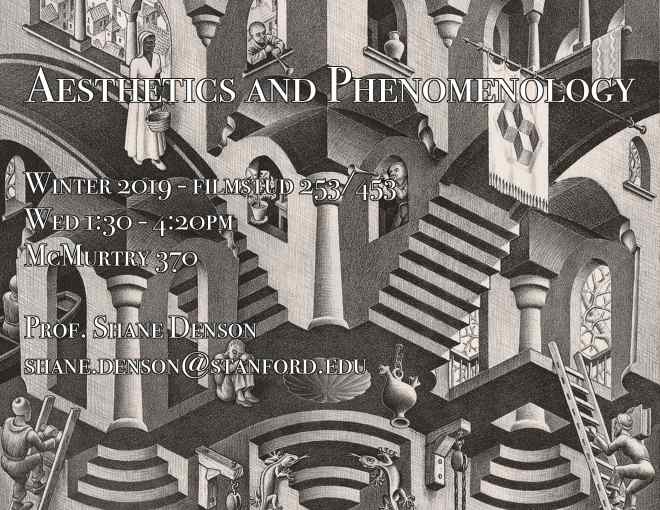
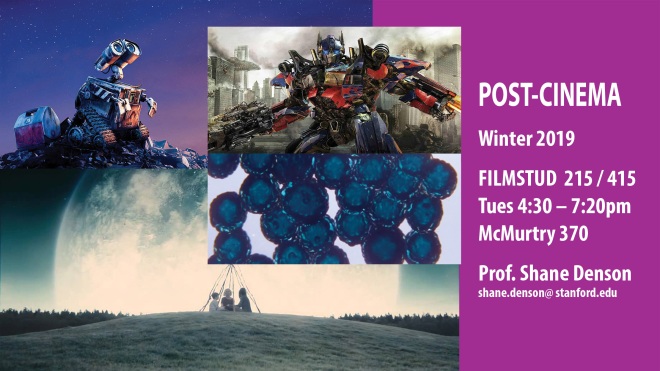



I have an encyclopedia entry on “Seriality” in The Bloomsbury Handbook of Literary and Cultural Theory, which is scheduled to come out this week. I’m not allowed to post the final version, so here is an early version that includes references, bibliography, and a few other details that were cut from the text as it will appear in print.
Seriality
Shane Denson, Stanford University
Seriality is a formal property and/or organizational principle that is commonly associated with ongoing narratives, recurring patterns, and periodic publication schedules. As a narrative form, seriality is perhaps most readily associated today with TV – especially the recent explosion of “narratively complex” (Mittell) television series, which inherit and adapt strategies from 20th-century film and radio serials and popular serialized literature of the 19thcentury. Outside of popular culture, seriality also characterizes a variety of tendencies or “attitudes” (Bochner) in modern art, exemplified by conceptual artists such as Sol LeWitt, Pop artists like Andy Warhol and Roy Lichtenstein, or the twelve-tone music of Arnold Schönberg; in each of these cases, seriality refers less to narrative continuity than to aesthetic modularity and material repetition of visual, acoustic, or other elements. Critical discussions of seriality tend to focus either on popular/narrative or on artistic/non-narrative expressions, thus suggesting a split between “high” and “low” forms; however, there are blurrings and borrowings on both sides: e.g. Pop Art appropriates serialized comics and popular culture generally, while the discontinuous, episodic forms of sitcoms and procedural crime shows embody the modular and quasi-industrial repetition that characterizes so much post-War gallery art. At the root of seriality in all of these forms is an interplay, highlighted by Umberto Eco, between repetition and variation (or innovation).
Seen in terms of this formal interplay, seriality is pervasive across literary and cultural traditions, from the Homeric epics to J.S. Bach’s Goldberg Variations and beyond. However, serial forms have proliferated at an unprecedented rate since the 19thcentury, when technological advances like the steam-powered printing press enabled serialized publication to dominate the literary marketplace. As Roger Hagedorn has argued, 19th-century feuilletons, penny dreadfuls, and dime novels attest to close relations between seriality and media-technical innovation: serialized stories “serve to promote the medium in which they appear” and thus “to develop the commercial exploitation of a specific medium” (5). Moreover, this explosion of serialized culture corresponds to advances in serialized production more generally; the steam engine enabled not only the daily newspaper but also promoted deskilled factory work, leading eventually to the Taylor/Ford assembly line. Thus, both narrative and non-narrative forms of seriality find impetus in industrialization; Eugène Sue and Donald Judd alike owe debts to industrial technologies, which are inextricable from capitalism. According to Karl Marx, capital operates according to serialized processes of its own (not just factory production but the process of repetition and variation expressed abstractly as M-C-M´ chains of value-production). This grounding of modern seriality in industrial capitalism helps explain the suspicion and scorn heaped on the “culture industry” by the likes of Horkheimer and Adorno, but it also points to the necessity to regard seriality not just as a formal property of cultural objects but as a social phenomenon that is central to the contemporary lifeworld: both our collective identities (such as “the nation,” according to Benedict Anderson, or gender for Iris Marion Young) and modern subjectivity itself (in Jean-Paul Sartre’s pessimistic view) can be seen as products and expressions of seriality.
Bibliography:
Anderson, Benedict. “Nationalism, Identity, and the Logic of Seriality.” The Spectre of Comparisons. New York: Verso, 1998.29-45.
Bochner, Mel. “The Serial Attitude.” Artforum 6.4 (December 1967): 28-33.
Eco, Umberto. “Innovation and Repetition: Between Modern and Post-Modern Aesthetics.” Daedelus 114 (1985): 161-184. Rpt. as “Interpreting Serials” in The Limits of Interpretation. Bloomington: Indiana UP, 1990. 83-100.
Hagedorn, Roger. “Technology and Economic Exploitation: The Serial as a Form of Narrative Presentation.” Wide Angle: A Film Quarterly of Theory, Criticism, and Practice 10.4 (1988): 4-12.
Horkheimer, Max and Theodor W. Adorno. “The Culture Industry: Enlightenment as Mass Deception.”Dialectic of Enlightenment: Philosophical Fragments. Ed. Gunzelin Schmid Noerr. Trans. Edmund Jephcott. Stanford: Stanford UP, 2002.
Marx, Karl. Capital, Volume 1. New York: Penguin Classics, 1990.
Mittell, Jason. Complex TV: The Poetics of Contemporary Television Storytelling. New York: New York UP, 2015.
Sartre, Jean-Paul. Critique of Dialectical Reason, Volume One. Trans. Alan Sheridan-Smith. Foreword by Fredric Jameson. New York: Verso, 2004.
Young, Iris Marion. “Gender as Seriality: Thinking about Women as a Social Collective.” Signs: Journal of Women in Culture and Society19.3 (1994): 713-38.
Further Reading:
Allen, Rob and Thijs van den Berg, eds. Serialization in Popular Culture. New York: Routledge, 2014.
Denson, Shane and Andreas Jahn-Sudmann, eds. Digital Seriality. Special issue of Eludamos: Journal for Computer Game Culture 8.1 (2014): <http://www.eludamos.org/index.php/eludamos/issue/view/vol8no1>.
Kelleter, Frank, ed. Media of Serial Narrative. Columbus: Ohio State UP, 2017.
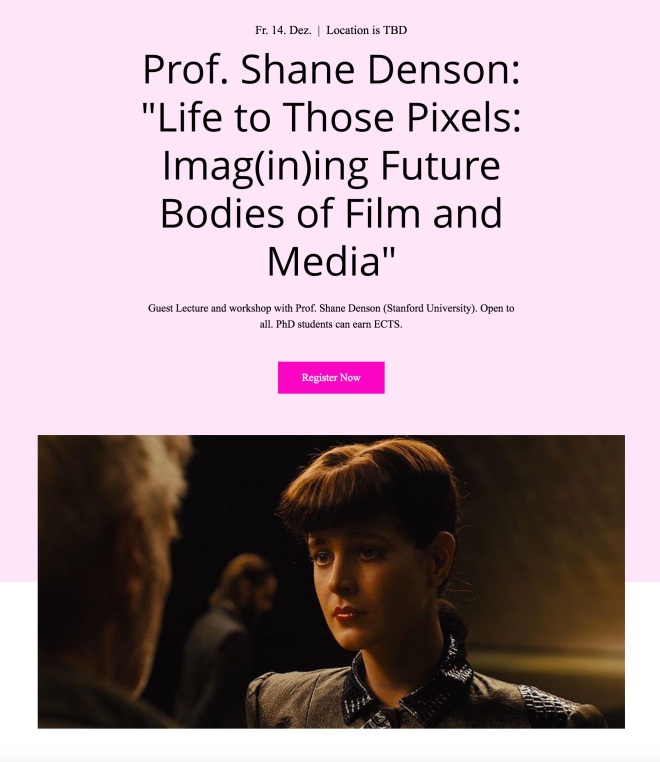 On December 14, 2018, I will be giving a talk titled “Life to Those Pixels: Imag(in)ing Future Bodies of Film and Media” at the University of Zurich, as part of the Imag(in)ing Future Bodies series hosted by the Doctoral Program of the English Department and organized by Morgane Ghilardi and Hannah Schoch. The lecture will be followed by a workshop in which we will discuss related work on post-cinema and discorrelated images.
On December 14, 2018, I will be giving a talk titled “Life to Those Pixels: Imag(in)ing Future Bodies of Film and Media” at the University of Zurich, as part of the Imag(in)ing Future Bodies series hosted by the Doctoral Program of the English Department and organized by Morgane Ghilardi and Hannah Schoch. The lecture will be followed by a workshop in which we will discuss related work on post-cinema and discorrelated images.
For more information, see the program website here, or register for the event here.

On Saturday, Nov. 17 (3:30 – 5:00pm), I will be presenting alongside Beth Coleman, Jacob Gaboury, James Malazita, and Patrick Keilty on a panel titled “Unstable Interface” at the 32nd Annual Meeting of the Society for Literature, Science, & the Arts (SLSA) in Toronto.
Here’s the panel lineup:
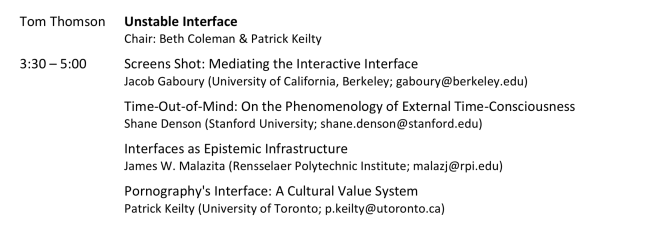
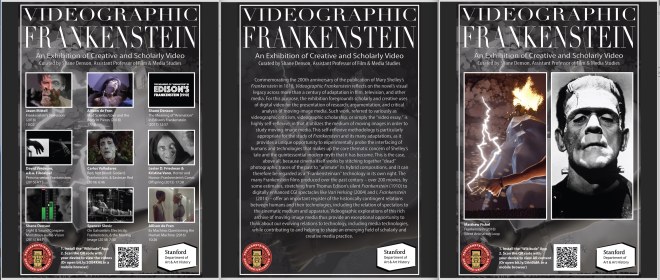
The Videographic Frankenstein exhibition at Stanford came to a close today, but like any good monster its demise is only temporary… On November 8, 2018, the show will be resurrected in the form of an augmented reality pop-up exhibition at the Library of Congress in Washington, D.C., as part of an event called “Playtest: An Open House for Emerging Media in the Digital Humanities” organized by Tahir Hemphill.
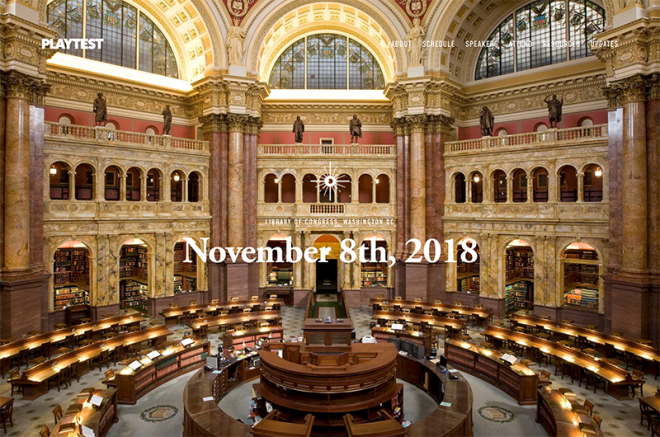
Incidentally, the Library of Congress has just made a beautiful new restoration of Thomas Edison’s 1910 Frankenstein available here.
Check it out!
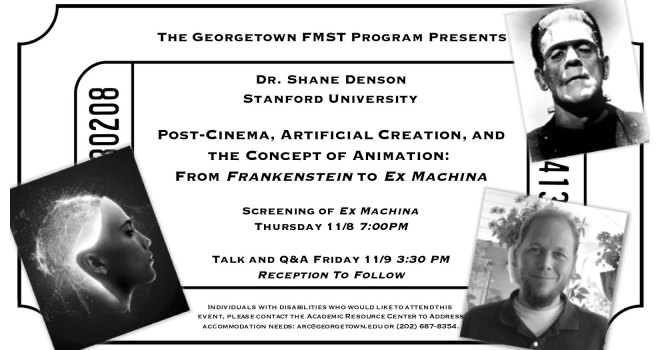 On Friday, November 9, I will be giving a talk titled “Post-Cinema, Artificial Creation, and the Concept of Animation: From Frankenstein to Ex Machina” at Georgetown University’s Film and Media Studies Program.
On Friday, November 9, I will be giving a talk titled “Post-Cinema, Artificial Creation, and the Concept of Animation: From Frankenstein to Ex Machina” at Georgetown University’s Film and Media Studies Program.
This is work stemming from my current book project, Discorrelated Images, which I am excited to present. Thanks to Caetlin Benson-Allott and Sky Sitney for inviting me to speak! For further information about the event, please contact Caetlin Benson-Allott.
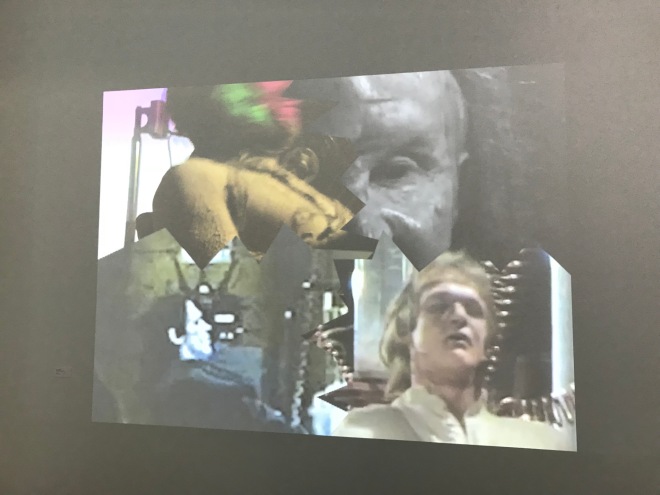
The Videographic Frankenstein exhibition has been extended an additional week, until November 2, 2018! If you’re in the Bay Area and haven’t been able to check it out, you’ve still got (a little) time!
See here for more details, and stay tuned for a few related events/developments!

Next week, Oct. 17-20, 2018, the Association for the Study of the Arts of the Present (ASAP) will be holding its annual conference in New Orleans. There I will be on a panel, called “Images Otherwise,” with some excellent co-panelists: Andrew Johnston (NC State), Brooke Belisle (SUNY Stony Brook), and Jacob Gaboury (UC Berkeley). I will be presenting work related to my forthcoming book, Discorrelated Images.
Here is my abstract:
Images of Discorrelation
Shane Denson, Stanford University
This presentation deals with the ongoing transition from a cinematic to a post-cinematic media regime. Situated at the cusp between film studies and digital media studies, “images of discorrelation” names a variety of contemporary visual phenomena (glitches, artifacts, motion-smoothing, etc.) and seeks to articulate a theory of the perceptual, actional, and above all affective impacts of the thoroughgoing computationalization of moving-image media. The concept of “discorrelation” concerns the severing of phenomenological relations between viewing subjects and image-objects; it results from the failure, on the part of contemporary cameras and other imaging devices, to situate spectators in a coherently articulated viewing position. Furthermore, discorrelation is an effect of the microtemporal processing of computational images, which impacts viewers’ own embodied processing of time at a subperceptual level, prior to the articulation of subject-object relations. This generative dimension implicates computational imaging systems, including their use in mainstream movies and other media, in a fundamental transformation of human-technological relations.
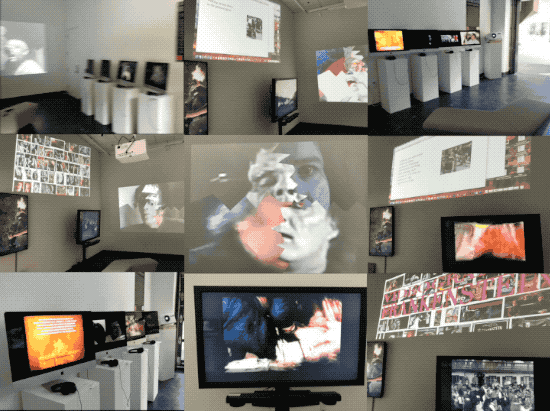
Videographic Frankenstein–the exhibition that I am curating at Stanford–opens today. The show runs from Sept. 26 through Oct. 26, 2018 in the Dr. Sidney and Iris Miller Discussion Space, McMurtry Building.
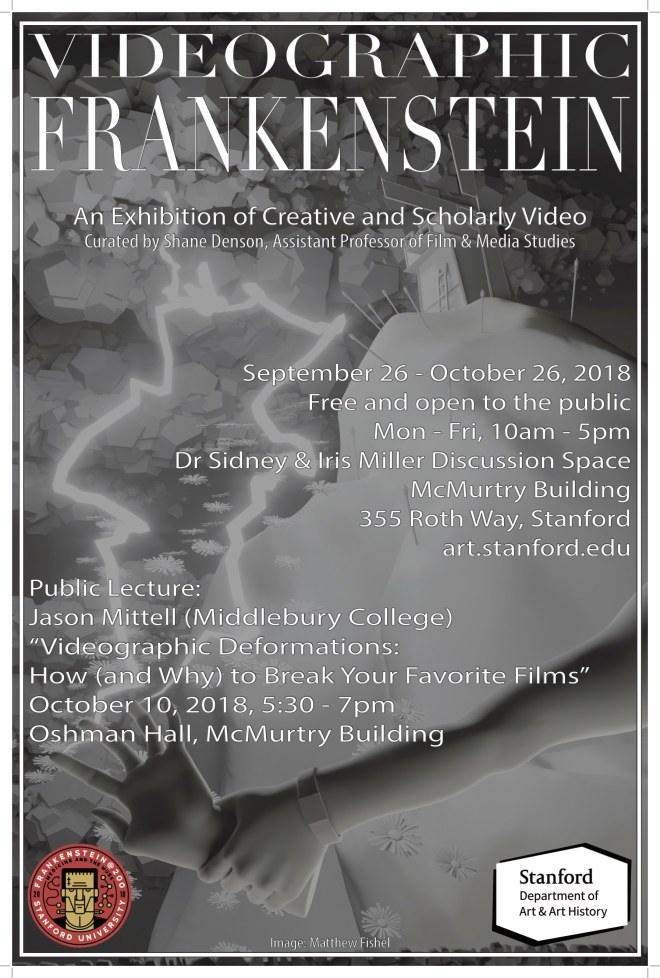
Works featured:
Frankenstein (2018), 2018
Matthew Fishel
Silent Animation LoopSpark of Being, 2010
Bill Morrison
Found Footage Film, 1:07:11Frankenstein’s Television, 2018
Jason Mittell
Video, 10:02Mad Science/Love and the Body in Pieces, 2018
Allison de Fren
Video, 17:18The Meaning of “Animation” in Edison’s FRANKENSTEIN, 2017
Shane Denson
Video, 12:57Red, Not Blood: Godard, Frankenstein, and Eastman Red, 2018
Carlos Valladares
Video, 6:46Persona versus Frankenstein, 2015
David Verdeure, a.k.a. Filmscalpel
Video, 4:15On Galvanism: Electricity, Frankenstein, and the Moving Image, 2018
Spencer Slovic
Video, 7:30Sight and Sound Conspire: Monstrous Audio-Vision in James Whale’s FRANKENSTEIN (1931), 2015
Shane Denson
Video, 8:47Questioning the Human Machine in EX MACHINA, 2016
Allison de Fren
Video, 10:26Horror and Humor: Frankenstein’s Comic Offspring, 2018
Lester D. Friedman and Kristine Vann
Video, 17:38
The exhibition was made possible by a Frankenstein@200 Initiative grant from the Medicine and the Muse Program at Stanford.
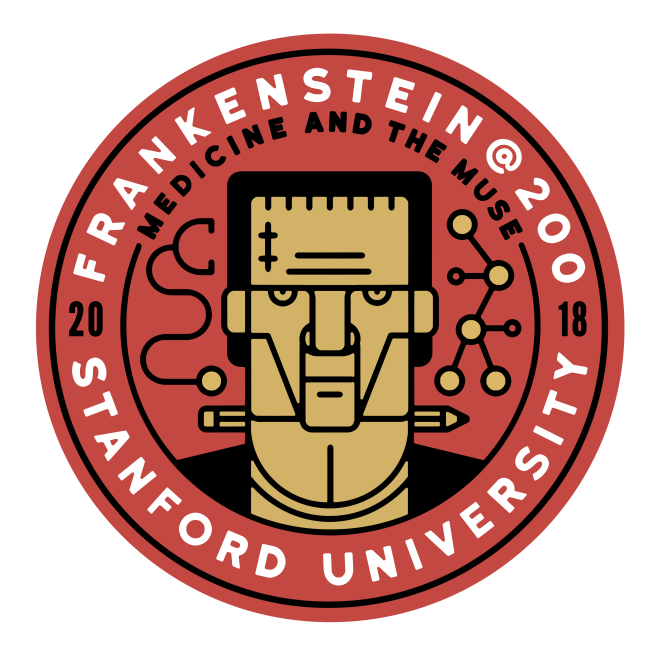
More information about the exhibition can be found here.
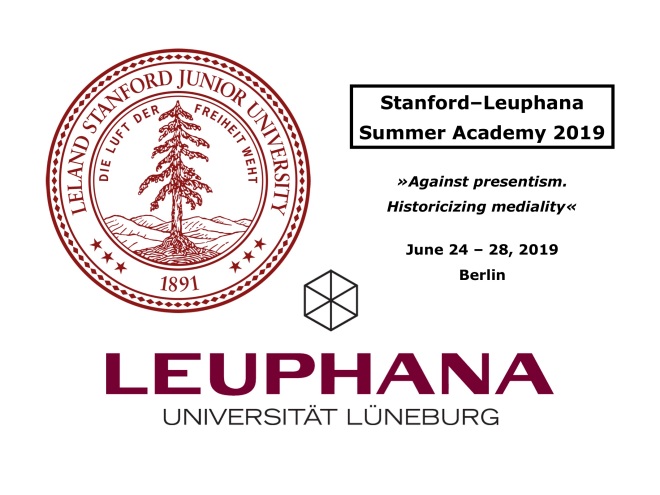
Introducing the inaugural Stanford – Leuphana Summer Academy:
Stanford–Leuphana Summer Academy 2019
»Against presentism. Historicizing mediality«
Thinking about technological changes or revolutions is often marked by a presentist, ahistorical mode of thinking and debate. Consider the contemporary discussion about »digital culture« and its technologies. The tropes mobilized are usually technicist and innovation- or even disruption-oriented, in both their affirmative and critical guises. Little attention is given to historical precursors of technologically driven social change. Even less attention is given to concepts and theories from other historical periods that might help investigate and understand our current predicament.
The Stanford-Leuphana Summer Academy seeks to change perspectives by focusing on concepts and theories that break with the myopia of presentism. In seeking to formulate a new research area in terms of other periods (e.g. premodern or early modern) and fields (e.g. anthropology, religious studies, art history, etc.), this 5-day seminar seeks to historicize mediality in productive and innovative ways. If »digital cultures« are not only modernity’s final product, but also brought an end to modernity, then it might be inspiring to think about digital cultures beyond or apart from modern concepts. What terms are historically specific for an age or culture, and what concepts apply broadly to various phenomena from the premodern to the present age? In what ways do preliterate, oral, or ritualistic cultures intersect with digital modes of information? How can these other perspectives change our thinking about the present?
Key terms:»ritual«, »authorship«, »sovereignty«, »arcane«, »orality«, »participation«, »public sphere«, »social construction of time«, »art«, »literature«, »history«, »philosophy«, »history of science«, »historiography«
Date: June 24 – 28, 2019
Location: Stanford Berlin, »Haus Cramer«, Pacelliallee 18, 14195 Berlin
Faculty
- Timon Beyes (Sociology of Organisation and Culture, Leuphana)
- Shane Denson (Film and Media Studies, Stanford)
- Elena Esposito (Sociology, Modena/Reggio Emilia)
- Marisa Galvez (French, Italian, and German Studies, Stanford)
- Hans-Ulrich Gumbrecht (Comparative Literature and German Studies, Stanford)
- Thomas Macho (Cultural History, IFK Vienna)
- Karla Oeler (Film and Media Studies, Stanford)
- Claus Pias (History and Epistemology of Media, Leuphana)
- Fred Turner (Communication, Stanford)
- Sigrid Weigel (Literature and Cultural Science, Berlin)
Application
All applications must be submitted electronically in PDF format. Please submit your CV (1-2 pages) along with a 500-word abstract of your topic, and a short letter of intent explaining why you would like to attend this Summer Academy.
Please use the following naming convention for your application files:Lastname_CV.pdf, Lastname_Abstract.pdf, Lastname_Letter_of_Intent.pdf.
Please email your applications to Nelly Y. Pinkrah (nelly.pinkrah@leuphana.de).
This summer school is designed for graduate students. The deadline for applications for the summer school is December 15, 2018. All applicants will be informed about the selection of participants by end of January 2019. The working language of the Summer Academy will be English.
The organizers will cover travel (economy) and accommodation costs for the time of the summer school. No additional fees will be charged.
Contact
Claus Pias (pias@leuphana.de)
Please spread the word to graduate students who might benefit from an interdisciplinary effort to rethink mediality and its relation to history.